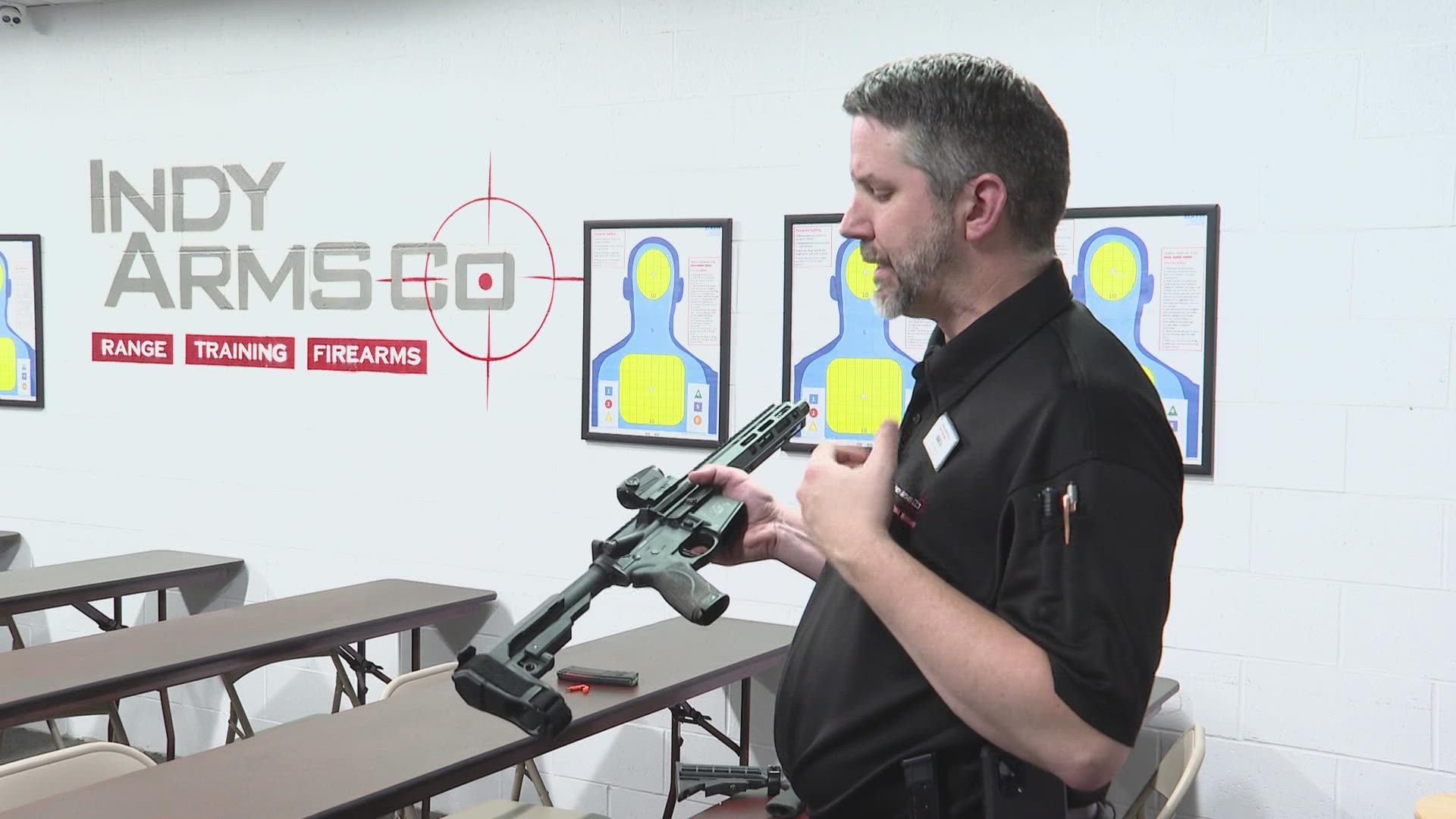INDIANAPOLIS — Pistol-stabilizing braces are popular, millions of people have them. But federal regulations on them are changing, requiring those who have them to register that brace or face serious penalties.
Inside Indy Arms off Keystone Avenue, retail manager Mark Welter knows his guns. But even he finds the ATF and Department of Justice's new rules regulating pistol braces to be confusing.
"It's extremely confusing," Welter said.
New federal regulations for pistol-stabilizing braces were announced earlier this month. But the braces themselves have been out for years.
"The original intent of this device was to enable people to shoot the gun like this one-handed with a greater degree of stability. So it was designed with disabled people in mind," Welter said.
The ATF's new regulations say these braces convert pistols into short-barreled rifles, which are much more heavily regulated by the National Firearms Act.
"So any pistol now with a brace on it, regardless of style or caliber or type of brace, they're saying is now a short-barreled rifle and has to be registered," Welter said.
And although they've been available legally for years, now anyone who owns one will soon be required to remove the brace from the pistol, turn the firearm in or register it tax-free. Gun owners who currently own the braces will have 120 days to register with the ATF once the new regulations are published in the federal register.
If you don't, the ATF says it will then be considered an unregistered short-barreled rifle, with the potential for up to 10 years of imprisonment, up to a $10,000 in fines or both.
"By moving the goal post, you've made criminals out of a very large number of people who up until last week did nothing wrong," Welter said.
The ATF estimates around three million stabilizing braces have been sold. But a report from the Congressional Research Service puts that number much higher, between 10 million and 40 million.
At Indy Arms, Welter said they're a popular item and they sell hundreds a year. And on their shooting range, they even require the braces to be used on some guns for safety.
"We don't allow a gun in this configuration to be shot on the range just because we've had issues with people not being able to control them: shooting the floor, shooting the wall, shooting the ceiling," Welter said. "So we have required a brace on the pistols like that."
The sudden crackdown on these braces is confusing and frustrating, Welter said, for owners and dealers. He's hopeful legal action will require the ATF relax these new rules.
"If they'd done that on day one back in 2012, if they'd looked at that submitted product and gone 'Yeah, that's a stock,' we wouldn't be having this conversation. But because they allowed that in one form or another for a decade and there's millions of them out there now," Welter said. "I think it's too late for them to put the genie back in the bottle and they're going to have a real hard time doing it."
The ATF has more information on the ruling to help those with the pistol-stabilizing braces take next steps on its website.

